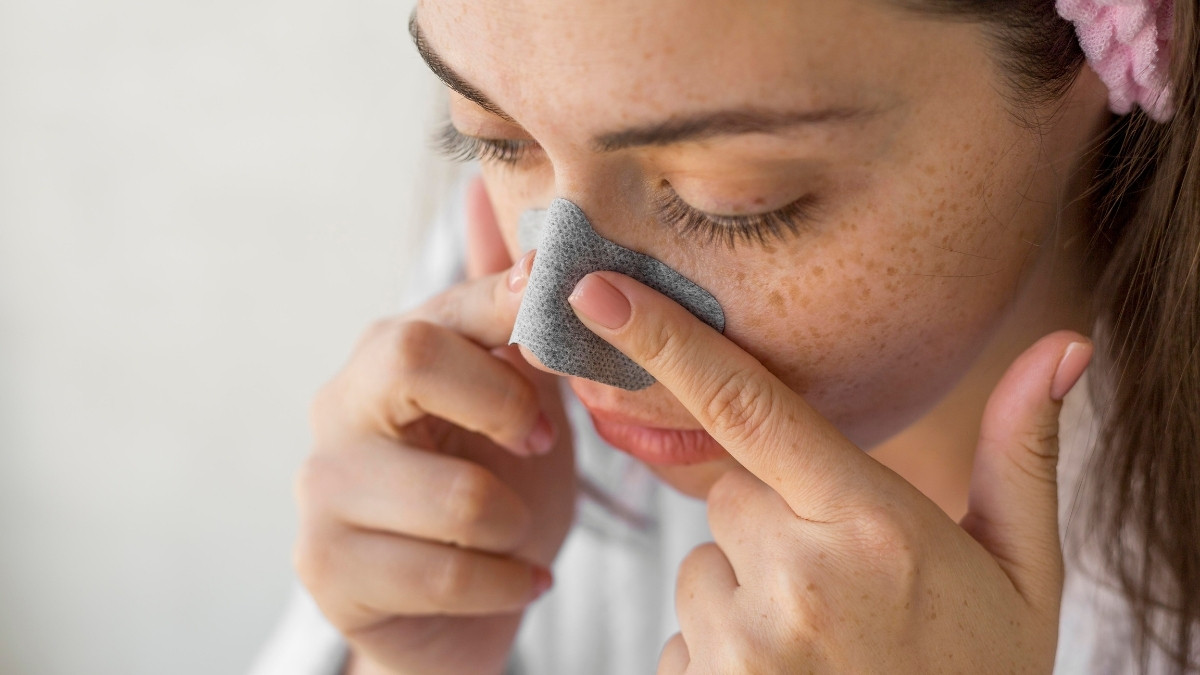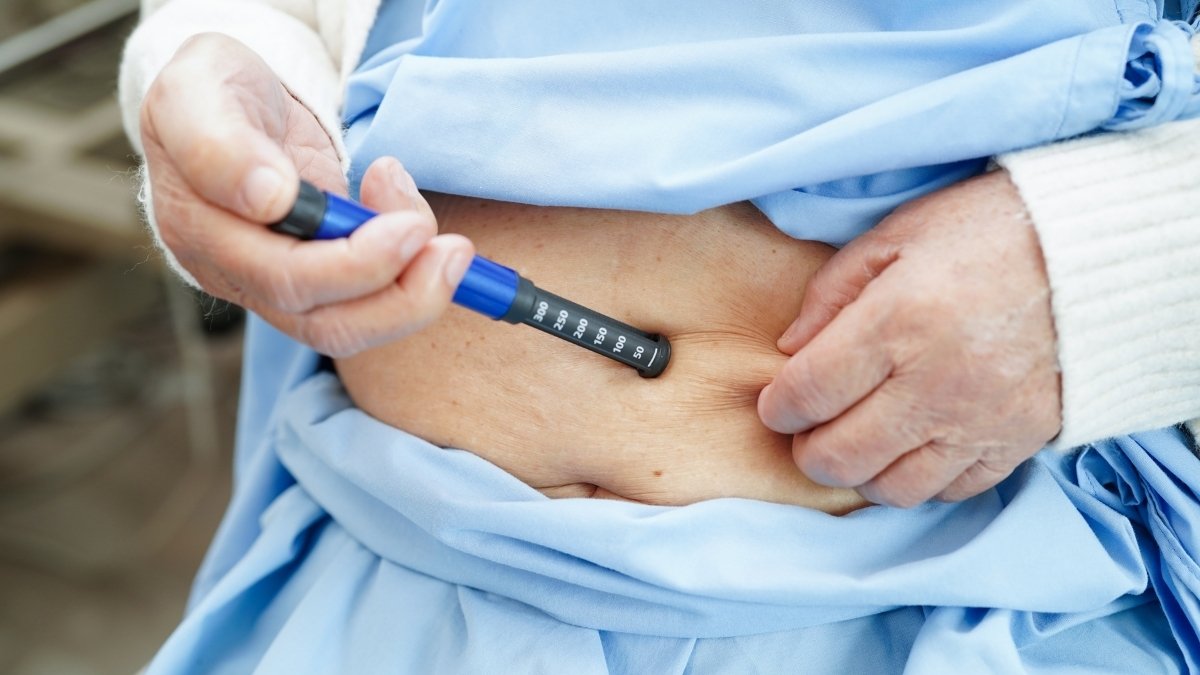Top 11 Warning Signs You’re Pre-Diabetic (Stop Diabetes Before It Starts!)
Your body has been sending you warning signals for months—maybe even years—but you’ve been too busy to notice. You feel tired more often. Your jeans fit tighter.
Maybe your vision gets blurry now and then, or you’re always thirsty. It doesn’t seem serious, so you brush it off. But here’s the truth: these could be signs of prediabetes.
Right now, 96 million Americans have it—and about 80% have no idea.
That’s a problem, because prediabetes doesn’t stay quiet forever. If ignored, it often turns into full-blown Type 2 diabetes. The good news? You still have time to stop it.
Why 96 Million Americans Don’t Know They Have Prediabetes
Your 4-Week Diabetes Prevention Plan
Americans have prediabetes – but only 1 in 10 know it
- A1C test (normal: below 5.7%)
- Fasting glucose (normal: under 100 mg/dL)
- Oral glucose tolerance test
- Comprehensive metabolic panel
- Cut all processed sugars
- Add 25-35g fiber daily
- Use smaller plates (9-inch max)
- Eat every 3-4 hours
- 150 minutes moderate exercise weekly
- Add resistance training 2x/week
- Take 10-minute walks after meals
- Track daily steps (aim for 7,000+)
- Practice stress management daily
- Get 7-9 hours quality sleep
- Drink 8 glasses water daily
- Build your support team
3+ symptoms at once
Symptoms appear suddenly
Extreme thirst/urination
High genetic risk present
Your body is sending you warning signals. But you can’t feel them.
That’s the scary truth about prediabetes. Your blood sugar is higher than normal, but not high enough to be called diabetes yet. And here’s the problem: most people have zero symptoms.
What Prediabetes Really Means
Think of prediabetes as your body’s yellow warning light. Your blood sugar sits in the danger zone between healthy and diabetic.
The numbers that matter:
- A1C levels between 5.7-6.4%
- Fasting glucose 100-125 mg/dL
If your doctor mentions these ranges, pay attention. You’re at a crossroads.
Why It’s Called the “Silent” Condition
Prediabetes earned its nickname for good reason. You won’t feel tired, thirsty, or sick like people with full diabetes do. Your body handles the extra sugar just well enough to keep you feeling normal.
This silence is dangerous. While you feel fine, damage slowly happens to your blood vessels, heart, and other organs. The CDC found that 96 million American adults have prediabetes. But get this: 8 out of 10 don’t even know it.
The Good News That Changes Everything
Here’s what doctors want you to know: prediabetes isn’t a life sentence. Studies show that up to 70% of people can stop it from becoming type 2 diabetes.
The key is catching it early and taking action. Small changes in what you eat and how much you move can turn things around. Some people even get their blood sugar back to normal ranges.
But only if you know you have it first. That’s why regular checkups matter. Ask your doctor about prediabetes screening, especially if you’re over 35 or carry extra weight.
Your future self will thank you.
Sign #1: Persistent Fatigue That Sleep Doesn’t Fix
You sleep eight hours but still feel drained by 2 PM. Your energy crashes without warning. This isn’t normal tiredness.

How Blood Sugar Wrecks Your Energy
When your blood sugar spikes and drops, your body goes on a roller coaster. You eat breakfast. Your blood sugar shoots up. Then it crashes down fast. This crash makes you feel exhausted, foggy, and desperate for more food.
Normal tiredness happens after you work hard or stay up late. Metabolic fatigue is different. It hits you even when you’ve rested well. You feel tired in your bones.
When Fatigue Becomes a Red Flag
If you’re tired most days despite good sleep, pay attention. If you need caffeine just to function, something’s wrong. When simple tasks feel overwhelming, your body is sending a message.
This connects to insulin resistance. Your cells stop responding to insulin properly. Sugar can’t get into your cells for energy. So you feel tired while sugar builds up in your blood.
Real example: Sarah slept nine hours but needed three cups of coffee by noon. She’d crash after lunch and crave sweets all afternoon.
Action Steps
Track your energy levels and what you eat. Notice patterns. Improve your sleep routine. But most important – talk to your doctor about blood sugar testing.
Your fatigue isn’t laziness. It’s your body asking for help.
Sign #2: Why You’re Always Thirsty and Running to the Bathroom
Your kidneys are working overtime. When blood sugar gets too high, your kidneys try to get rid of the extra glucose. They do this by making more urine.

Here’s what happens: High blood sugar makes you pee more. More peeing makes you lose water. Less water makes you thirsty. You drink more water. The cycle starts again.
This isn’t like being thirsty after a workout. You might drink a full glass of water and still feel thirsty 20 minutes later. You might wake up at night needing water.
How to tell if this is serious:
- You’re drinking way more than usual
- You pee every hour or two
- Your urine is light yellow or clear
- You feel thirsty even after drinking water
- This lasts for days, not hours
Other things can make you thirsty too. Hot weather, salty food, or certain medicines. But those don’t usually last for weeks.
What you should do: Track how much you drink each day. Write it down. Count how many times you use the bathroom.
If you’re peeing more than 8 times a day and always feel thirsty, call your doctor. Don’t wait. Early treatment prevents bigger problems later.
Your body is trying to tell you something important.
Sign #3: Unexplained Weight Changes
Your clothes feel tight around your waist. The scale shows numbers you don’t expect. These changes happen even when you eat the same foods.

Why Your Weight Acts Strange
When your body can’t use insulin properly, your metabolism goes haywire. Your cells can’t get the energy they need from sugar. So your body stores more fat, especially around your belly.
This belly fat is different from other fat. It’s called visceral fat. It sits deep inside your abdomen and makes your waist bigger.
Some people lose weight instead. Their body burns muscle and fat for energy because cells can’t use sugar properly. You might think this sounds good, but it’s not healthy weight loss.
Stress hormones make this worse. When blood sugar stays high, your body releases cortisol. This hormone tells your body to store more belly fat.
What This Looks Like
You gain 10-20 pounds in your midsection over six months. Your pants don’t fit. Or you lose weight without trying – maybe 5-10 pounds in a few weeks.
Your body shape changes. You develop an “apple” shape instead of your normal figure.
What You Can Do
Measure your waist once a week. Write it down. Women should worry if it’s over 35 inches. Men should worry if it’s over 40 inches.
Ask your doctor about body composition testing. This shows how much of your weight is fat versus muscle.
Sign #4: Why Your Cuts Won’t Heal and Infections Keep Coming Back
You notice small cuts taking weeks to heal. You get more infections than usual. Your skin feels different. These aren’t just bad luck – they’re warning signs your blood sugar might be too high.

What’s Really Happening in Your Body
High blood sugar acts like poison to your immune system. It makes your white blood cells sluggish and weak. They can’t fight off germs like they should.
Your blood circulation gets worse too. Poor blood flow means less oxygen and nutrients reach your wounds. Without these healing ingredients, cuts stay open longer. Bacteria love these open wounds.
Signs to Watch For
Your cuts take more than two weeks to heal completely. You get frequent UTIs, yeast infections, or skin infections. Small scratches turn red and angry. Your gums bleed easily or get infected often.
You might notice your skin feels thicker or darker in some spots. This happens because high blood sugar changes how your skin works.
What You Can Do Right Now
Check all cuts and scrapes daily. Clean them with soap and water. Use antibiotic cream if needed. Call your doctor if any wound looks infected – red, hot, or has pus.
Keep your skin clean and moisturized. Track when infections happen. This information helps your doctor see patterns and adjust your treatment.
Don’t ignore these signs. They’re your body asking for help.
Sign #5: Blurred Vision or Eye Problems
Your eyes blur when blood sugar goes haywire. And that’s scary.

High blood sugar makes your eye lens swell up. Think of it like a balloon filling with water. When this happens, you can’t focus clearly. Everything looks fuzzy.
Here’s what you need to know: some vision problems go away when you fix your blood sugar. Others don’t.
The temporary stuff happens when your glucose spikes or crashes. You might squint at your phone screen or struggle to read road signs. This usually gets better in a few hours or days once your levels balance out.
But here’s the serious part. Blurred vision can signal diabetic retinopathy. This condition damages tiny blood vessels in your eyes. Left alone, it can steal your sight forever.
See an eye doctor right now if you have:
- Sudden vision loss
- Dark spots in your sight
- Flashing lights
- Vision that doesn’t improve after blood sugar stabilizes
Take action today:
- Track your vision changes in a journal
- Schedule yearly eye exams (even if you see fine)
- Check blood sugar when vision gets blurry
- Don’t wait – early treatment saves sight
Your eyes are telling you something important. Listen to them.
Sign #6: Tingling or Numbness in Hands/Feet
Do your hands feel like they’re “asleep” even when you’re wide awake? Are your feet numb or tingling for no clear reason? This could be your body’s early warning about blood sugar problems.

What’s Really Happening
High blood sugar acts like poison to your nerve endings. It damages the tiny nerves in your hands and feet first. Why there? These nerves are the longest in your body and get hurt easiest.
You might feel:
- Pins and needles in your toes
- Burning pain in your feet
- Hands that feel “dead” or heavy
- Sharp, shooting pains
How This Differs from Other Causes
Sitting wrong makes your foot “fall asleep” for minutes. Diabetes nerve damage lasts hours or days. It often hits both sides at once. And it gets worse over time if you ignore it.
What You Need to Do Now
Test your sensations. Can you feel a light touch on your toes? Ask someone to touch your feet with a feather or cotton ball while you close your eyes.
See a doctor fast. They can run nerve tests and check your blood sugar. Early treatment can stop more damage.
Start prevention today. Control your blood sugar. Check your feet daily. Wear good shoes that fit right.
Catch this early, and you can keep your nerves healthy for years to come.
Sign #7: Dark Patches on Your Skin Could Mean Your Body Can’t Handle Sugar
You notice dark, thick patches on your neck or under your arms. They feel rough and look dirty, but they won’t wash off.

This is called acanthosis nigricans. It’s not a skin problem. It’s your body warning you about insulin resistance.
What It Looks Like
These patches show up in body folds. You’ll see them most on your neck, armpits, and groin area. The skin turns brown or black and feels thick like velvet.
Many people think it’s dirt. They scrub harder, but nothing changes. That’s because it comes from inside your body, not outside.
Why This Happens
When your body can’t use insulin well, your skin cells grow too fast. This creates the thick, dark patches you see.
Think of it as your skin’s way of showing an internal problem.
The Good News
You can reverse this. As your insulin levels improve, the dark patches fade. Some people see changes in just a few months.
What to Do Now
Check your skin in good light. Take photos to track changes.
See a dermatologist to confirm what you’re seeing. Ask your doctor for insulin and blood sugar tests.
Don’t ignore these patches. They’re telling you something important about your health.
Sign #8: Why You Can’t Stop Craving Sugar and Carbs
You know that feeling. It’s 3 PM and you’d kill for a cookie. Or you finish dinner but still want something sweet. This isn’t normal hunger.
When your metabolism breaks down, your body sends fake hunger signals. Here’s what happens:
You eat sugar or refined carbs. Your blood sugar shoots up fast. Then it crashes hard. Your brain panics and screams “FEED ME!” even though you just ate.
This creates a roller coaster you can’t get off. Up, down, up, down. All day long.
Normal cravings vs. metabolic problems:
- Normal: You want something sweet after a good meal
- Problem: You need sugar every few hours or you feel awful
Insulin resistance makes this worse. Your cells can’t use sugar properly, so your brain thinks you’re starving. It sends intense cravings to make you eat more.
The cycle becomes addictive. Sugar hits the same brain pathways as drugs. You need more to feel normal.
What to do about it:
Keep a craving journal. Write down when you want sugar and what you ate before. You’ll see patterns.
Test your blood sugar after meals with a cheap glucose meter. If it spikes above 140, that food is causing problems.
Cut the refined stuff gradually. Replace white bread with whole grain. Swap candy for fruit. Your cravings will calm down in 2-3 weeks.
Sign #9: When Your Brain Feels Foggy and You Can’t Focus
You sit down to work, but your mind feels like it’s wrapped in cotton. Simple tasks take forever. You read the same paragraph three times.

This isn’t just stress or lack of sleep. Your blood sugar might be messing with your brain.
When blood sugar swings up and down, your brain doesn’t get steady fuel. Think of it like a car running on bad gas. It sputters and stalls.
Doctors call this “diabetic brain.” Your memory gets fuzzy. Focus becomes impossible. You forget where you put your keys or what you walked into a room to get.
This hits your daily life hard. Work projects pile up because you can’t concentrate. You feel frustrated and tired all the time.
What You Can Do:
Track your mental clarity alongside your blood sugar readings. Write down when you feel sharp versus foggy. Look for patterns.
Check your blood sugar when brain fog hits. You’ll likely see spikes or crashes.
Eat protein with every meal to steady your blood sugar. Take short walks after eating. Get better sleep.
Your brain fog isn’t permanent. Fix your blood sugar, and your mind clears up too.
Sign #10: High Blood Pressure or Cholesterol
Your numbers are climbing. And that’s your body sending a warning signal.

High blood pressure and bad cholesterol don’t just appear out of nowhere. They’re often part of something bigger called metabolic syndrome. This happens when your body stops using insulin the right way.
How Insulin Problems Hurt Your Heart
When insulin resistance kicks in, your body makes too much insulin. This extra insulin tells your kidneys to hold onto salt. More salt means higher blood pressure. It also changes how your liver makes cholesterol, creating the dangerous small, dense particles that stick to artery walls.
Numbers That Matter
Watch for blood pressure over 130/80. That’s when doctors start to worry. For cholesterol, it’s not just the total number.
Pay attention to your HDL (good cholesterol) dropping below 40 for men or 50 for women. Your triglycerides climbing over 150 is another red flag.
What You Should Do
Get your blood pressure checked every month. Ask your doctor for a comprehensive metabolic panel that includes fasting glucose and insulin levels. Don’t just test cholesterol totals – get the full breakdown.
Schedule a cardiac risk assessment if your family has heart disease. Early action prevents bigger problems later.
Your heart health connects directly to how your body handles sugar and insulin.
Sign #11: When Family History Makes Everything More Serious
Your family tree holds clues about your future health. And here’s why that matters.

The Numbers Don’t Lie If one parent has diabetes, your risk jumps to 40%. Both parents? You’re looking at 70% risk. That’s not a maybe. That’s a wake-up call.
Why Genes Stack the Deck Family history doesn’t just add risk. It multiplies it. Have a family history plus you’re overweight? Your risk shoots up even more. Add high blood pressure to the mix? Now you’re in the danger zone.
Your Background Matters Some groups face higher risks. African Americans, Hispanics, Native Americans, and Asian Americans get hit harder. If you’re in these groups and have family history, pay attention.
When to Act Fast Family history becomes urgent when you have other signs too. Belly fat plus family history? Don’t wait. Weird thirst plus family history? Get tested now.
Your Action Plan Build your family health tree. Write down who had what. Ask older relatives. Get genetic counseling if multiple family members have diabetes. Set up regular screening – every year, not every few years.
Your genes loaded the gun. Your choices pull the trigger.
Your 4-Week Diabetes Prevention Plan
Your 4-Week Diabetes Prevention Plan
Americans have prediabetes – but only 1 in 10 know it
- A1C test (normal: below 5.7%)
- Fasting glucose (normal: under 100 mg/dL)
- Oral glucose tolerance test
- Comprehensive metabolic panel
- Cut all processed sugars
- Add 25-35g fiber daily
- Use smaller plates (9-inch max)
- Eat every 3-4 hours
- 150 minutes moderate exercise weekly
- Add resistance training 2x/week
- Take 10-minute walks after meals
- Track daily steps (aim for 7,000+)
- Practice stress management daily
- Get 7-9 hours quality sleep
- Drink 8 glasses water daily
- Build your support team
3+ symptoms at once
Symptoms appear suddenly
Extreme thirst/urination
High genetic risk present








